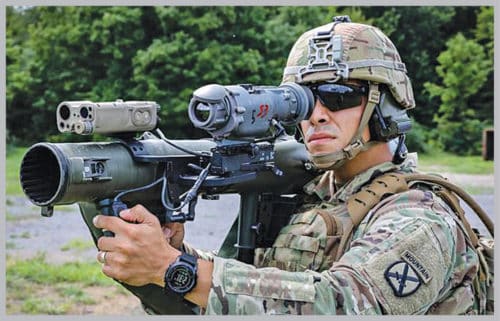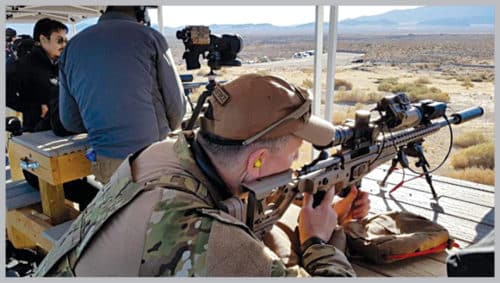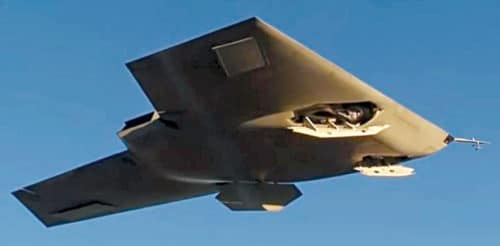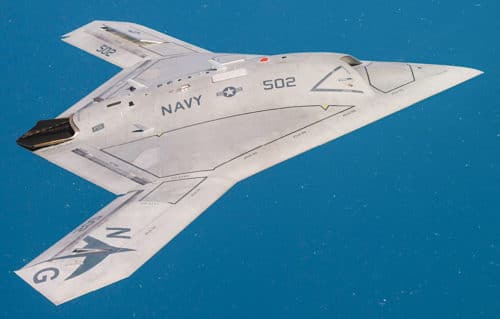With the emergence of artificial intelligence technology, the world is in a great dilemma. While AI brings many benefits to the society, there are also great risks involved, including ethical issues and destruction.

Are you afraid of artificial intelligence (AI)? Tesla and SpaceX boss Elon Musk has said that AI is more dangerous than nuclear warheads. Russian President Vladimir Putin has opined that the nation that leads in AI technology will be the ruler of the world. Currently, AI is a two-horse race between China and the US. China is on a mission to be the world leader in AI by 2030. In this article we walk through some facts on the latest AI developments related to military and defence applications. But before delving into these facts, let us first scan through various warfare revolutions in the history of mankind.

Warfare revolutions
Dogs and horses were probably the first animals used in war. Many animals are still being used by modern military and police forces. We learn from history that animals, mammals, birds, etc have also been reportedly used in wars in the earlier days. But modern-day warfare revolutions are largely driven by technology, and the ability to achieve precision and efficiency. The word revolution itself may be controversial depending on how you perceive it. However, each revolution has an element of uniqueness and disruptive nature.

The first revolution goes back to the invention of gun powder and the use of automatic machine guns in the first world war (WWI). Battle tanks were developed, and these carried fire guns across the battlefield along with foot soldiers on the ground. War planes were also developed during this period. The battle was fought between military units.
The second revolution saw the invention of the nuclear bomb, which was used in the second world war (WWII). This revolution witnessed much more powerful warfare that caused mass destruction because no particular military unit was targeted. Fire power had the power to wipe off the entire targeted area or even an entire city. Jet engines, ballistic missiles and submarine nuclear warheads were also developed during the second revolution.
The third revolution includes the use of drones, unmanned aerial vehicles (UAVs) and AI. With the use of AI technology, earlier electronics warfare techniques are becoming more intelligent, effective and precise in many ways.
Advances in AI technology have led to lethal autonomous weapons (LAWs), where robots can independently search and engage targets without human intervention. Many AI-based LAWs have been developed worldwide. Experts predict that with advancements in technology, AI and robots could eventually replace soldiers in warfare. Thus, many people think that AI is the third revolution in warfare.
Again, in recent decades we have witnessed the ever-prevalent use of computers and AI technology in warfare. With the emergence of AI, there is a threat of cyber warfare and autonomous weapons. The very facts that we are living in a connected world now and that Internet-based equipment are used by defence departments make us vulnerable to cyber-attacks.
Militaries around the world are upgrading their nuclear weapons with greater automation and connectivity. Digital automation and connectivity are essential in today’s defence strategies and operations. For example, a submarine nuclear warhead deployed in the ocean depends on different computer systems, such as the nuclear propulsion plant, navigation, fresh air, fresh water and so on. The different computer systems, including codes, are written and built by human experts. This could mean that an enemy can hack the systems.
Cyber-attacks can also paralyse major critical national infrastructures, such as power distribution grids, transportation, information hubs, etc. Hence, all cyber-attacks require quick and effective decision-making. In case of delayed decisions, there can be chaos and confusion about social order, which can make it difficult to initiate damage control and restore normalcy. It could also disrupt traditional systems and result in more predictable patterns of conflict escalation, leading to war including nuclear attacks as the worst-case scenario.
Why AI could be dangerous
As per Wikipedia, the deadliest war in history, in terms of the cumulative number of deaths since its start, is WWII, with 60 to 85 million deaths, followed by the Mongol conquests at up to 60 million deaths. Now, as technology progresses, the world is marching towards more dangerous situations. While it is true that AI technology can radically help improve the precision, effectiveness and efficiency of many weapons, development of LAWs could be dangerous.
AI-based LAWs can be a scary thing in future because of two main reasons. First, AI could go wrong and out of control. In 2007, in South Africa, a semi-autonomous robotic cannon went out of control and killed nine friendly soldiers and injured fifteen others on the spot.
Second, an AI system could be hacked by a rogue state or terrorist, trigger deadly weapons and cause devastation to entire cities.
Use of AI technology for military applications including defensive, offensive and information warfare is increasing day by day. On defensive systems, LAWs can autonomously identify and attack oncoming missiles, rockets, artillery fire, aircraft and surface vessels according to the criteria set by the human operator. Many missile defence systems, such as Iron Dome, also have autonomous targeting capabilities. Examples of offensive systems include stationary sentry guns, which can fire at humans and vehicles, being used in South Korea and Israel.
With the rolling out of 5G networks, there will be more bandwidth and higher speed of digital operations and automation, further enabling the rapid rise of AI technology. This also raises serious concerns, because apart from self-driving cars and remote robotic surgeries, the world is susceptibility to cyber-attacks and surveillance, in addition to development of military autonomous vehicles and weapons. Therefore without proper regulation, the world is moving towards a dangerous situation in this era of AI technology.
Rise of the real killer robot in the air
So far, we have seen the capabilities and applications of AI on Earth and in the oceans. What if AI is deployed in the air? AI in air space is more profound, devastating and can cause colossal damage to people. You may be hiding underground, underwater or anywhere on Earth, and AI-assisted devices can easily find you. Many countries are developing AI-assisted weapons such as aircraft, hypersonic missiles, submarines and drones. China, Israel and the US are widely recognised as the industry leaders in unmanned combat aerial vehicle (UCAV) technology.
On offensive systems, AI is employed to achieve a higher degree of autonomy. LAWs would include drones or UCAVs. For example, the unarmed BAE Systems Taranis drone prototype can autonomously search, identify and locate enemies. It can also defend itself against enemy aircraft.
Another example is Northrop Grumman X-47B Pegasus UCAV, which is a tailless jet-powered blended-wing-body aircraft capable of semi-autonomous operation and aerial refuelling. It is known as the best military UCAV. It can take off and land on aircraft carriers, and is set to be developed into an unmanned carrier-launched airborne surveillance and strike (UCLASS) system.
Boeing has unveiled an autonomous fighter jet that is expected to launch in 2020. The aircraft is designed to fly with crew during combat, gather intelligence, and perform early warning, surveillance and reconnaissance.
Global giants in AI arms race
While Google has refused a contract deal with US Department of Defence citing that the technology should not be used for destruction, Microsoft and Amazon have been selected by US Department of Defence as the two finalists for its US$ 10 billion Joint Enterprise Defence Infrastructure (JEDI) cloud contract.

On the other hand, China’s AI industry aims to take the lead in the AI arms race. Over the forecast period of 2019 to 2025, China’s defence expenditure on AI is expected to record a CAGR of 21.6 per cen, increasing from US$ 265 to reach US$ 1041.8 million by 2025. China is also developing large autonomous submarines suitable for reconnaissance, mine placement and suicide attacks against enemy vessels, slated for deployment in the early 2020s.
Many other countries like the UK and Russia are also developing autonomous weapons and drones. Experts think that the arms race between these countries will someday inevitably lead to a system of artificial general intelligence (AGI). Development of AGI could be the final arms race, after which there would be a new chapter in human history.
With the emergence of AI technology, the world is in a great dilemma. While AI brings many benefits to the society, there are also great risks involved, including ethical issues and destruction. Hardware is easily available, and software has become open source. Bad guys could use the technology for mass destruction.
Indian defence in AI space
The government of India has initiated the process of preparing Indian defence forces to use and develop AI technology within the country. Ministry of Defence has set up Defence AI Project Agency (DAIPA), an agency that lays down standards for technology development and delivery process for Al projects, establishes the standard operating procedure for these projects, formulates policy for IPR and provides for selection of strategic partners.
Indian defence forces are planning to use AI to identify and index military objects in aerial photographs or in videos. Report says that the armed forces are launching an AI engine that can further analyse satellite photos and video feeds from drones to identify images and patterns in real time.
According to reports, Army Design Bureau, a part of Make in India programme, has built a device that will warn soldiers of unusual activity across different terrains, including in high altitude areas.
Another project has been sanctioned to a DRDO-based laboratory to develop AI-based solutions to signal intelligence to enhance intelligence collation and analysis capabilities for the armed forces.
Conclusion
AI has become an essential element of defence programmes across the world. Many countries are taking part in the AI arms race, and autonomous weapons are being developed. LAWs could be the weapons of terror and destruction in future. Many countries are focusing on developing cyber warfare capabilities to defend their national infrastructure and attack against foreign adversaries in cyberspace. There are high chances of rogue states and terrorist groups breaching the cyber-security of one or more nuclear-armed countries, and setting in motion a nuclear attack in future.
The Indian government has also initiated the process of preparing defence forces for the use of AI. Experts think that in future, wars will be fought by AI-based autonomous machines, but whether humans will still be in charge is difficult to predict right now. Hence, do not underestimate the power of AI! And let me ask you the question again: Are you afraid of AI?






